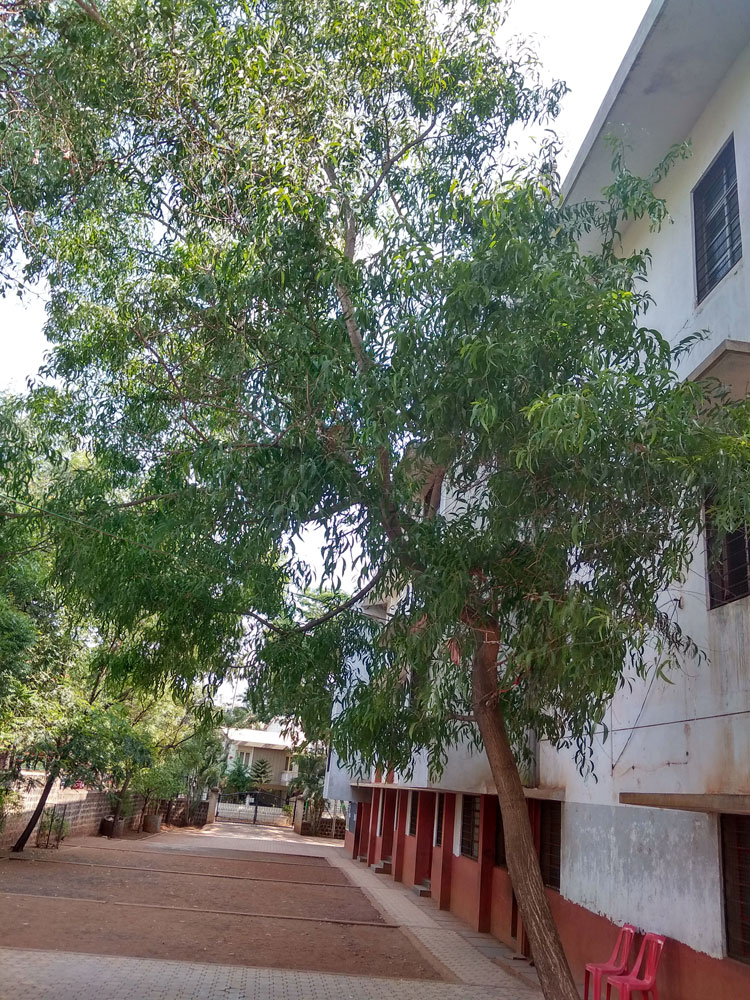Bengali Babul - Australian Wattle Tree

Acacia auriculiformis
Summary
Scientific Classification
Kingdom: Plantae
Division: Magnoliophyta
Class: Magnolipsida
Order: Fabales
Family: Fabaceae
Genus: Acacia
Species: C.auriculiformis
Scientific Name: Acacia auriculiformis Benth.
Common names
English : Australian wattle, Japanese acacia, coast wattle, Darwin black wattle, ear-leaf acacia, ear-pod black-wattle, ear-pod wattle, wattle, tan wattle, northern black wattle, Papua wattle.
Hindi: Bengali babul.
Marathi: Akashia.
Discription
- Habit and Habitat: It is a thornless, medium-sized and evergreen tree growing up to 15 m high.A riparian species, ringing perennial rivers and semi-perennial creeks, and tending to form discontinuous populations along drainage systems Savannahs, woodlands, swamp edges, coastal savannas, grasslands, monsoon forests and regrowth.
- Distribution: tree are found in Australia, Papua New Guinea and Indonesia. It has been extensively introduced across the tropics.
- Morphology:
Leaf: : The leaf is actually an expanded petiole resembling and having the function of a leaf, a phyllode. phyllodes grow alternately on the stem (spirally arranged),bright green-coloured. It is coriaceous, leathery and glabrous on both sides. The shape is elliptic and falcate, the apex is obtuse or acute, the base is attenuate and the margins are entire.The phyllode has parallel and arching veins.
Inflorescence: flowers are grouped in axillary and terminal spikes.
Flowers: Yellow, fragrant, complete, actinomorphic, hermaphrodite.The calyx-tube is cup-shaped with 5 short and triangular lobes. The calyx is light green yellowish and glabrous.The corolla is composed of 5 yellow-coloured and glabrous petals. The petals are ovate-lanceolate and recurved, about 1 mm long and 0.6-0.7 mm wide.
ANDROECIUM: The androecium is composed of numerous and bright yellow stamens. The filaments are 1.5-2 mm with tiny and globular anthers.
GYNOECIUM: The style is yellow-coloured, 2.5-3 mm long and the stigma is simple. The ovary is globose and 1 mm across.
Fruit: The fruit is a coiled and spirally twisted pod. The pod is 6-8 cm long and 1 cm wide, flattened and it usually contains 5-7 seeds. The pod is brownish-coloured and woody when ripe.
Seeds:The seeds are ovate, 5 mm long and 4 mm wide. The seeds are dark brown-coloured and encircled by a long showy yellowish-orange-coloured and fleshy funicle.
Flowering and Fruiting time: December-March. - Propagation: by seed.
- Importance:
a. The wood is extensively used for paper pulp and large-scale plantations have already been established for the production of pulp.
b. The bark is use as tanning material and a natural dye is also extracted from the bark. The wood is fine-grained, often attractively figured and finishes well. It is excellent for turnery articles, toys, carom coins, chessmen and handicrafts. It is also used for furniture, joinery, tool handles and for construction.
c. It is a major source of firewood. It also provides very good charcoal.
d. Cultivated in gardens or planted on road sides. - Location: In front of New Building.
 Trees of GSS Project supported by Makerspace Belgaum Website concept and designe by
Trees of GSS Project supported by Makerspace Belgaum Website concept and designe by